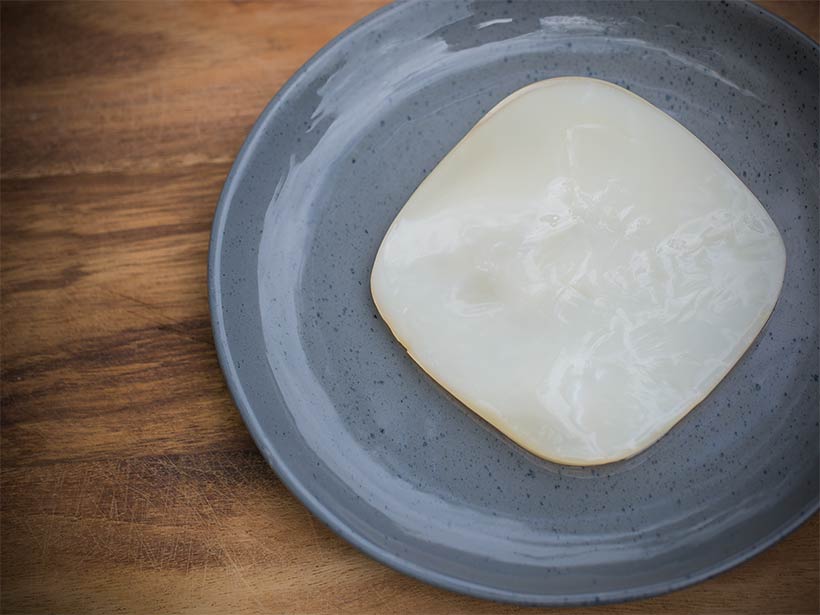A SCOBY is a Symbiotic Culture Of Bacteria & Yeast, that ferments the sugar and nutrients found in a sweet tea into delicious, healthy kombucha. In some cases a SCOBY will also be called a ‘mushroom’ or a ‘mother’.
As the bacteria and yeast ferments the sweet tea, the bacteria produces cellulose which builds up as a living biofilm – forming the thick, off-white rubbery SCOBY that floats on the surface of the kombucha.
A SCOBY is a protective layer to seal of the kombucha from the air during the fermentation process, stopping undesirable, pathogenic bacteria from contaminating the brew.
If you want to make a great homemade kombucha – the secret lies in the quality of the SCOBY and the ingredients you have chosen.
SCOBY Science
A SCOBY will generally contain different bacterial species – usually from the Acetobacter family, along with a range of Saccharomyces yeast species.
The yeast species found in the SCOBY ferment the sugar into alcohol in the form of ethanol, which then is then converted into beneficial acidic compounds by the bacterial species. The alcohol concentration during the fermentation process also triggers the cellulose production that forms the structure of a new SCOBY.
The Acetobacter bacteria family convert ethanol into acetic acid in the presence of oxygen. These bacteria turn the sugar and nutrients found in the tea into organic compounds like:
- Acetic Acid
- Butyric Acid
- Gluconic Acid
- Glucuronic Acid
- Lactic Acid
- Usnic Acid
- Oxalic Acid
- Malic Acid
What does a healthy SCOBY look like?
The appearance of SCOBY can vary quite significantly depending on the brewing container, the tea and sugars used and the SCOBY’s age. If your homemade kombucha smells tangy similar to weak vinegar then it is likely your SCOBY is brewing well.
Bubbles, blobs of jelly and brown strings (these are yeast products) are all normal.
 |
 |
 |
 |

It is quite obvious when a SCOBY has become contaminated with mould or harmful bacteria types. Black or green spots and fuzzy growths are bad signs – if these are obvious on your SCOBY you will need to throw out the contaminated batch and start again.
If the kombucha smells rotten or cheesy then the batch is contaminated. Please remember that once something has gone wrong with the brew it will only get worse – drinking contaminated kombucha can be very dangerous. Always throw out the batch, sterilise all utensils and containers and start with a completely fresh SCOBY.
How do I get a Kombucha SCOBY?
We want to share homemade kombucha with you – get started with your own SCOBY now. Visit our Shop page now!

